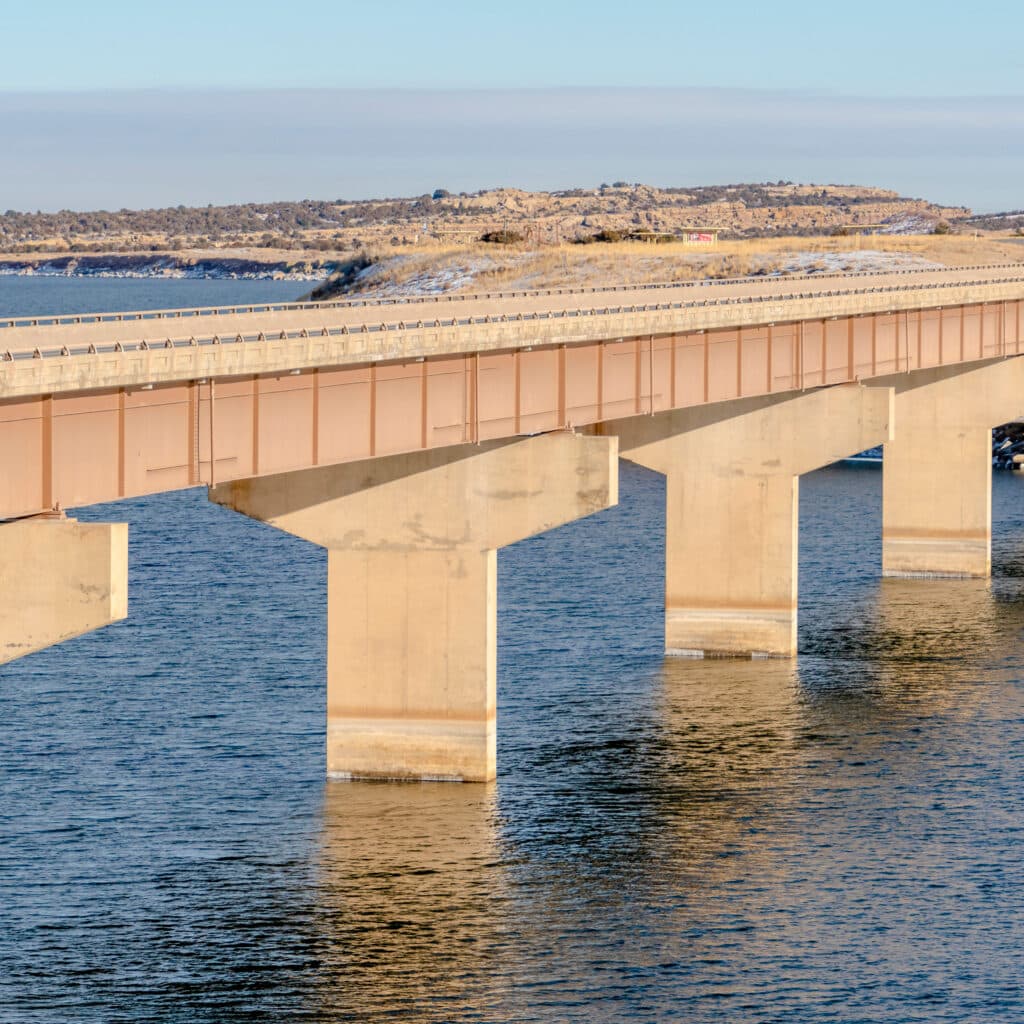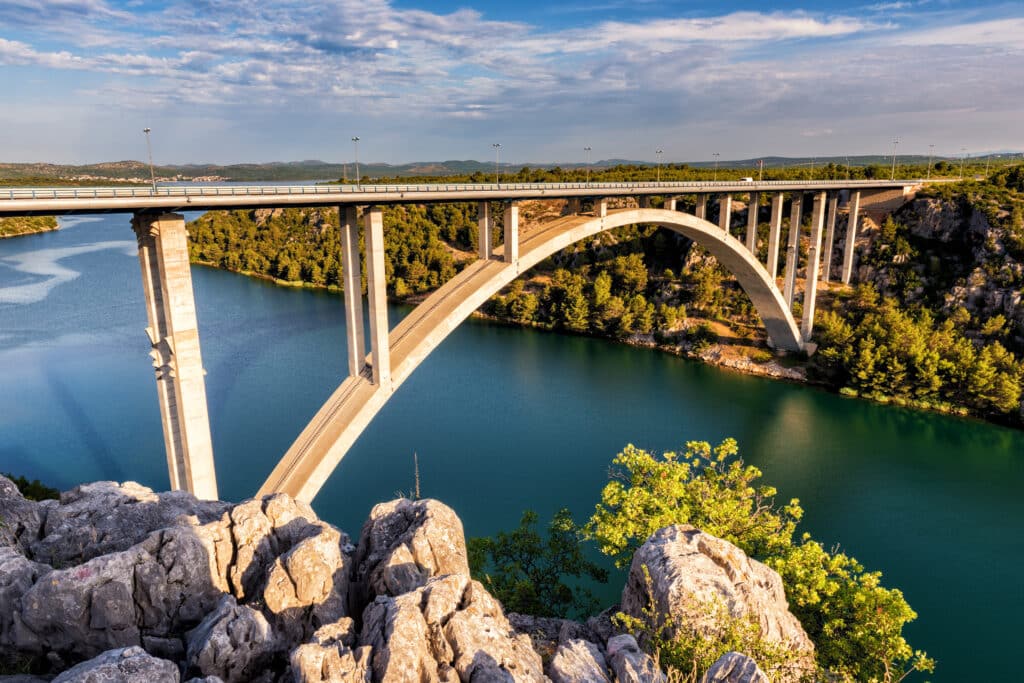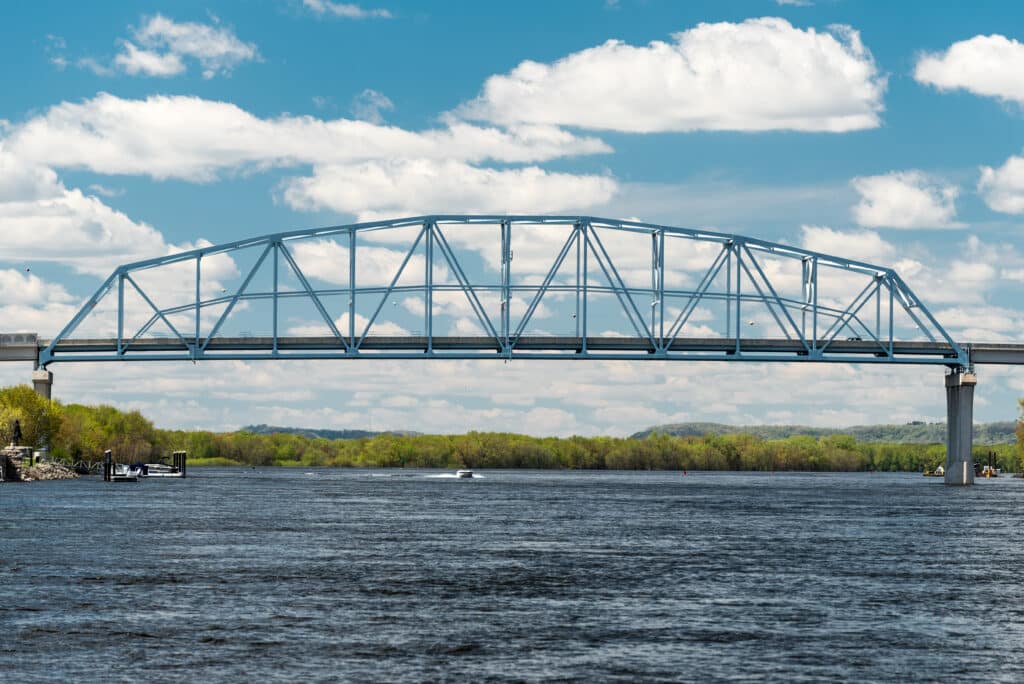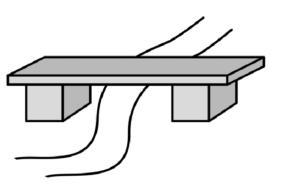Four Types of Bridges
Vocabulary
Read the vocabulary terms to understand the reading better.
Arch Bridge
An arch bridge is a bridge supported from underneath by a strong curved structure that looks like a half circle and with supports at both ends to keep the arch from spreading.
Beam Bridge
A beam bridge is a bridge made from vertical piers supporting horizontal beams or planks.
Buttresses
Buttresses are structures that are usually made of brick or stone, and are built against walls to support and strengthen them.
Suspension Bridge
A suspension bridge is a bridge that has its roadway suspended, or held up, by two or more thick steel cables that pass over one or more towers and are anchored at the ends of the bridge.
Truss Bridge
A truss bridge is a bridge made by a series of connected triangles made from steel beams.
In the diagrams below, the pairs of arrows show the following forces at work:
←→ tension →← compression
Beam Bridge


A beam bridge has a horizontal beam supported by two piers. The beam bends when a load is on the bridge. A load can be cars, trucks, or a train. Compression acts on the top side of the beam and the two piers. Tension acts on the bottom side of the beam.
Arch Bridge


The arch is a very strong shape. A load on top of the bridge causes compression on the top of the arch. It also causes tension at the bottom of the arch. This tension could cause the arch to spread apart, making it weaker. The material on the sides of the arch acts like buttresses. The material keeps the arch from spreading apart.
Truss Bridge


A truss bridge is built with triangles made of steel bars.
A triangle is a very strong shape. Compression and tension forces act on the bridge. The diagram below shows the forces.
Suspension Bridge


On a suspension bridge, tall towers support the main cable. Smaller cables attached to the main cable support the roadway. These cables are called suspenders. The main cable is attached to large blocks at each end of the bridge. The load of traffic on the bridge is transferred to the suspenders. This causes tension in the suspenders. The suspenders transfer the load to the main cable. This causes tension in the cables. Compression acts on the towers as they support the weight of the bridge and the traffic.
To learn more about bridges, watch the video by SciShow Kids on YouTube.
Show What You Know!
Complete some questions about the reading selection by clicking “Begin Questions” below.










